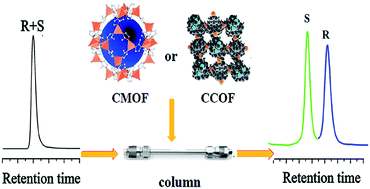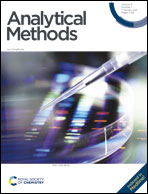Chiral porous organic frameworks and their application in enantioseparation
Abstract
Porous organic frameworks (POFs) are a kind of porous material with a network structure composed of repeated monomers, which have excellent physical and chemical properties, such as a high surface area, high porosity, uniform pore sizes and structural diversity, and which have aroused broad interest among researchers. With the rapid development of materials science, increasingly more porous materials have been developed and applied, especially metal organic frameworks (MOFs) and covalent organic frameworks (COFs), which have been widely applied in the fields of luminous materials, catalytic research, adsorption and drug transport. One of the most important applications for chiral porous materials is in chiral separation and these materials have become a research hotspot in the field of chromatographic separation and analysis in recent years. In this review, from the viewpoint of enantioseparation, the synthesis of chiral porous materials and their applications in high-performance liquid chromatography (HPLC), capillary electrochromatography (CEC), and gas chromatography (GC) are reviewed. The typical applications of MOFs in solid-phase microextraction (SPME) are also discussed.

- This article is part of the themed collection: Advanced Separation


 Please wait while we load your content...
Please wait while we load your content...